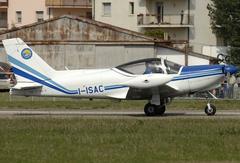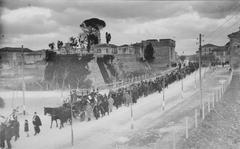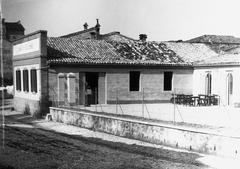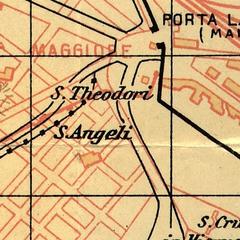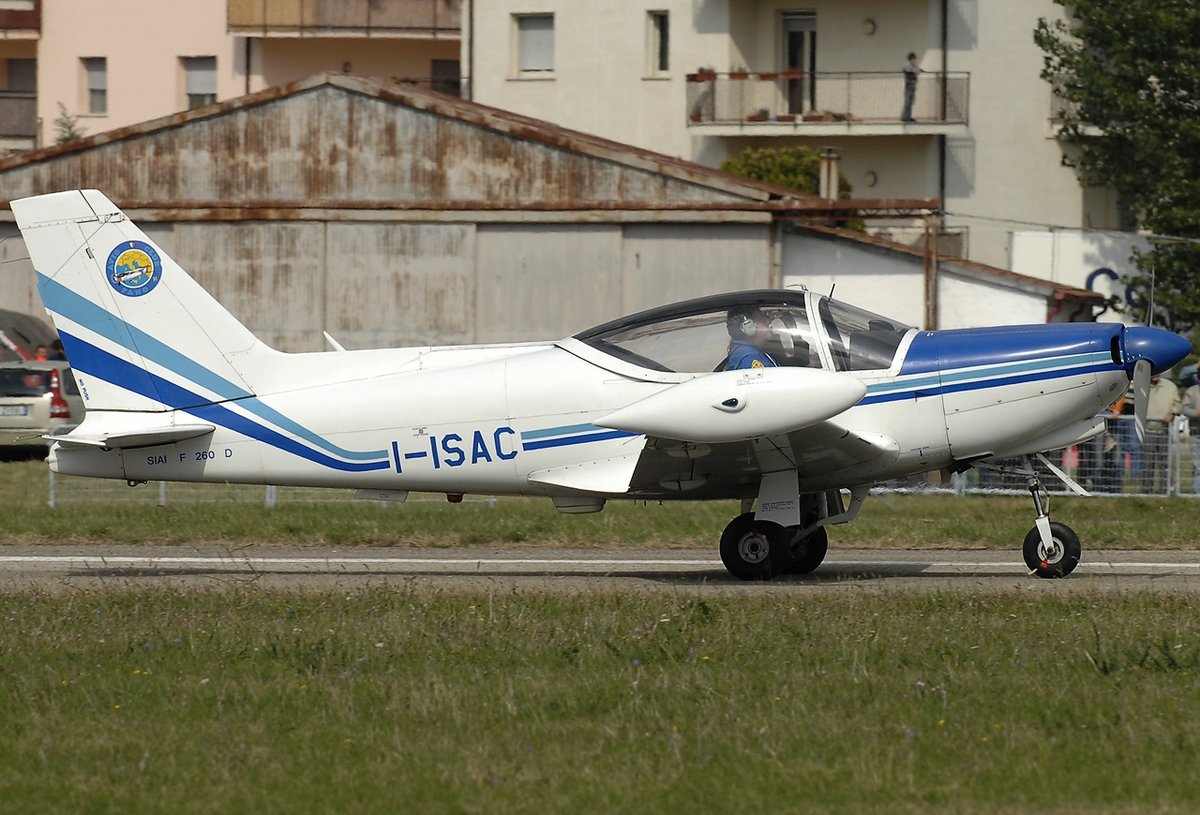
Fano Airport Visiting Hours, Tickets, and Travel Guide for Fano, Italy
Date: 15/06/2025
Introduction
Nestled just a kilometer southeast of Fano’s historic center in the picturesque Marche region, Fano Airport (ICAO: LIDF) stands as more than a general aviation aerodrome—it is a living testament to centuries of history and a vibrant stage for contemporary culture. Originally constructed in 1944 as a military airfield by the United States Army Corps of Engineers, Fano Airport played a vital role during World War II before transitioning into civil and recreational aviation (Wikipedia; Military History Fandom). Today, it serves private pilots, flight schools, and aviation enthusiasts and, since June 2025, has emerged as a dynamic venue for major cultural events like the Adriatic Sound Festival, which creatively fuses Fano’s Roman heritage with cutting-edge music and art (Adriatic Sound Festival; Festival Insights).
This detailed guide offers insights into Fano Airport’s historical significance, practical visiting information, major events, and tips for exploring the surrounding treasures of Fano—from the iconic Arch of Augustus to the city’s vibrant medieval and Roman sites. Whether you’re an aviation aficionado, festivalgoer, or cultural traveler, this resource will help you make the most of your experience in Fano.
Table of Contents
- Introduction: Fano Airport’s Historical and Cultural Context
- Visiting Hours and Ticket Information
- Getting to Fano Airport: Transportation and Parking
- Airport Facilities and Accessibility
- Historical Overview
- Major Events and Festivals
- Exploring Fano: Nearby Attractions
- Visitor Tips and Practical Information
- Frequently Asked Questions (FAQ)
- Plan Your Visit: Resources and Useful Links
Visiting Hours and Ticket Information
- General Visiting Hours: Fano Airport operates primarily during daylight hours, typically from 06:30 to 23:00, though access may be restricted outside of event days (Aeroporto di Fano). For up-to-date information, check the airport’s official website or contact the administration directly.
- Event Hours: Major festivals, like the Adriatic Sound Festival, may have extended or altered hours; consult the relevant event website for specifics (Adriatic Sound Festival).
- Tickets: No tickets are required for general airport visits or aviation activities. Tickets are mandatory for special events, such as the Adriatic Sound Festival or Paradrenalina. These can be purchased online via official event websites (Adriatic Sound Festival; Paradrenalina on AllEvents.in).
Getting to Fano Airport
- By Car: The airport is conveniently located 1 km southeast of Fano’s city center. Parking is available on-site, with fees applicable during major events (Aeroporto di Fano).
- Taxi Services: Taxis operate daily from 06:30 to 23:00, providing fast connections between the city and airport.
- Public Transport: Direct bus connections to the airport are limited. Most visitors use taxis, rideshare services, or bicycles. Fano is a bike-friendly city, and cycling is a popular choice.
- Nearby Airports: For travelers arriving by commercial airline, Ancona Falconara Airport (AOI) and Rimini Federico Fellini Airport (RMI) are the nearest options, both less than an hour’s drive from Fano (Ancona Falconara Airport; Rimini Federico Fellini Airport).
Airport Facilities and Accessibility
- Terminal and Amenities: The airport features a modest terminal with basic comforts like seating and restrooms. On-site food and beverage options are limited, but local cafes and restaurants can be found in Fano’s city center.
- Aircraft Facilities: Fano Airport has a single runway for light aircraft and flight training, with parking and hangarage for private pilots.
- Ground Handling: Services include refueling, towing, and basic maintenance. Customs and immigration are not routinely available; international arrivals require prior arrangement.
- Accessibility: The airport is wheelchair accessible and features ground-level parking. Event organizers provide additional accommodations as needed; contact them for specific requirements.
Historical Overview
Roman Origins and Significance
Fano, originally known as Fanum Fortunae, was a prominent Roman settlement at the mouth of the Metauro River. Its name derives from a temple dedicated to Fortuna, the goddess of luck, and its location at the junction of the Via Flaminia and Adriatic coastal routes made it a key crossroads (Italy This Way; Understanding Italy). The enduring symbol of this legacy is the Arch of Augustus, erected in 2 CE as a monumental city gateway.
World War II: Military Use
Constructed in late 1944 by the United States Army Corps of Engineers, Fano Airfield was a crucial temporary base for the USAAF Twelfth and Fifteenth Air Forces. It supported tactical operations and bombing missions targeting northern Italy and the Balkans (Wikipedia; Military History Fandom). After the war, the airfield was turned over to local authorities and repurposed for civil aviation.
Postwar Civil Aviation and Cultural Revival
Now a general aviation hub, Fano Airport is used by private pilots, flight schools, and aero clubs. It hosts airshows, open days, and aviation-themed events, and has recently gained new cultural significance as a venue for major festivals (Aeroporto di Fano).
Major Events and Festivals
Adriatic Sound Festival
Launched in June 2025, the Adriatic Sound Festival is a groundbreaking electronic music and arts event, attracting global artists and large audiences (Adriatic Sound Festival; Festival Insights). The festival’s Infinity Stage, inspired by Fano’s Arch of Augustus, combines Roman iconography with futuristic design for a unique sensory experience (TPi Magazine). The event’s integration of ancient and modern themes highlights Fano’s distinctive identity.
Paradrenalina and Aviation Events
Paradrenalina, scheduled for June 21, 2025, is an aviation-focused festival featuring parachuting, aerobatics, and flight demonstrations (Paradrenalina on AllEvents.in). Fano Airport also regularly hosts open days, airshows, and educational workshops in collaboration with local flight schools and aero clubs.
Exploring Fano: Nearby Attractions
- Arch of Augustus: A Roman triumphal arch built in 9 AD, symbolizing Fano’s ancient roots. It is an open-air monument, accessible free of charge year-round (Fano Tourism).
- Roman Walls and Archaeological Sites: Remnants of the ancient city’s infrastructure are visible throughout Fano.
- Medieval Fortifications: Explore the Malatesta Fortress, offering panoramic views and museum exhibits (Malatesta Fortress Visitor Info).
- Fano Historic Center: Discover museums, the Roman theatre, local shops, and vibrant cafes.
Visitor Tips and Practical Information
- Tickets: Purchase event tickets online in advance to ensure entry.
- Transport: Plan your transport ahead, especially for event days; taxis and bicycles are recommended.
- Parking: Parking is available at the airport, but spaces fill up quickly during major festivals.
- Accessibility: Contact organizers for any special accommodations.
- Food and Amenities: On-site amenities are limited; take advantage of nearby city facilities.
- Best Time to Visit: Spring and early autumn offer pleasant weather and fewer crowds.
Frequently Asked Questions (FAQ)
Q: What are the general visiting hours for Fano Airport?
A: Usually from 06:30 to 23:00. Event-specific hours may differ; check official sources.
Q: Are tickets required to visit the airport?
A: No tickets for general visits. Tickets are required for festivals and major events.
Q: How do I reach Fano Airport from the city center?
A: Taxis and bicycles are popular; public buses are limited.
Q: Is the airport accessible for disabled visitors?
A: Yes, with ground-level parking and wheelchair access; contact organizers if you have specific needs.
Q: What attractions are near Fano Airport?
A: The Arch of Augustus, Roman walls, medieval fortresses, and Fano’s historic center.
Plan Your Visit: Resources and Useful Links
- Aeroporto di Fano (official site)
- Adriatic Sound Festival
- Airport Profile: Fano Airport
- Fano Tourism Information
- Ancona Falconara Airport
- Rimini Federico Fellini Airport
For interactive maps, event updates, and guided tours, download the Audiala app. Stay connected with Fano Airport and local event organizers on social media to receive the latest news and travel tips.
Discovering the Arch of Augustus: Fano’s Ancient Gateway
The Arch of Augustus is Fano’s most iconic ancient monument, built in 9 AD as a northern gate to the Roman colony of Fanum Fortunae. Commissioned by Emperor Augustus, the arch celebrates the peace and prosperity of his reign. Today, it stands as a free, open-air attraction, surrounded by the city’s lively historic center (Fano Archaeological Museum; Official Fano Tourism Website).
- Visiting: No tickets are required; the arch is accessible year-round.
- Nearby Sites: Explore the Malatesta Fortress, Roman Theatre, and Archaeological Museum for a deeper dive into Fano’s history.
- Events: The arch is the focal point for many festivals, including the Carnevale di Fano and guided night tours.
Travel Tips:
- Fano is easily reached from major regional airports and is pedestrian-friendly.
- English is widely spoken in tourist areas, but basic Italian is helpful.
- Local cafes and shops offer authentic Marche cuisine and hospitality.
Key Takeaways & Call to Action
Fano Airport is a unique convergence of history, aviation, and cultural innovation in the heart of Italy’s Marche region. From its strategic World War II origins to its modern role as a festival and community hub, the airport offers visitors a rich, multifaceted experience. Its close proximity to Fano’s Roman and medieval sites—especially the Arch of Augustus—makes it an ideal gateway for exploring the city’s enduring heritage and vibrant present (Wikipedia; Adriatic Sound Festival; Aeroporto di Fano; Visit Italy).
Advance planning is recommended for event tickets, transportation, and accessibility. Use resources like the Audiala app and official tourism websites for current schedules, guided tours, and insider information. Fano Airport invites you to experience Italy’s layered past and dynamic culture—making each visit a memorable journey through time.
References
- Adriatic Sound Festival
- Airport Profile: Fano Airport
- Aeroporto di Fano
- Fano Tourism
- Wikipedia: Fano Airfield
- Military History Fandom: Fano Airport
- Understanding Italy: Fano
- Italy This Way: Fano History
- Festival Insights: Adriatic Sound Festival Stage Design
- Visit Italy: Fano Like a Local
- TPi Magazine: Stufish Unveils Stage Design for Adriatic Sound Festival
- Fano Archaeological Museum
- Malatesta Fortress Visitor Info
- Official Fano Tourism Website
- Paradrenalina on AllEvents.in
